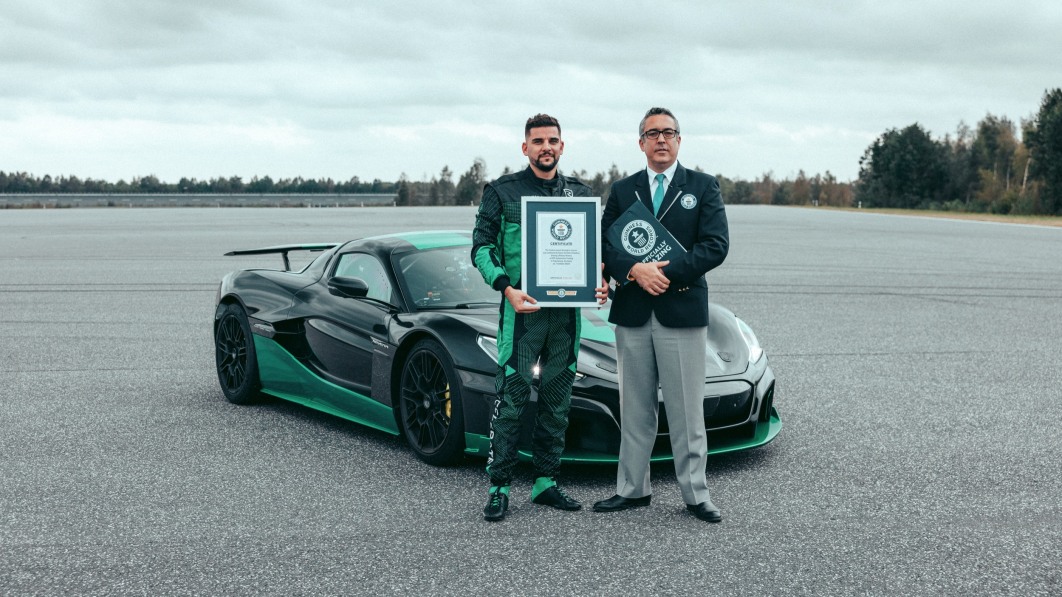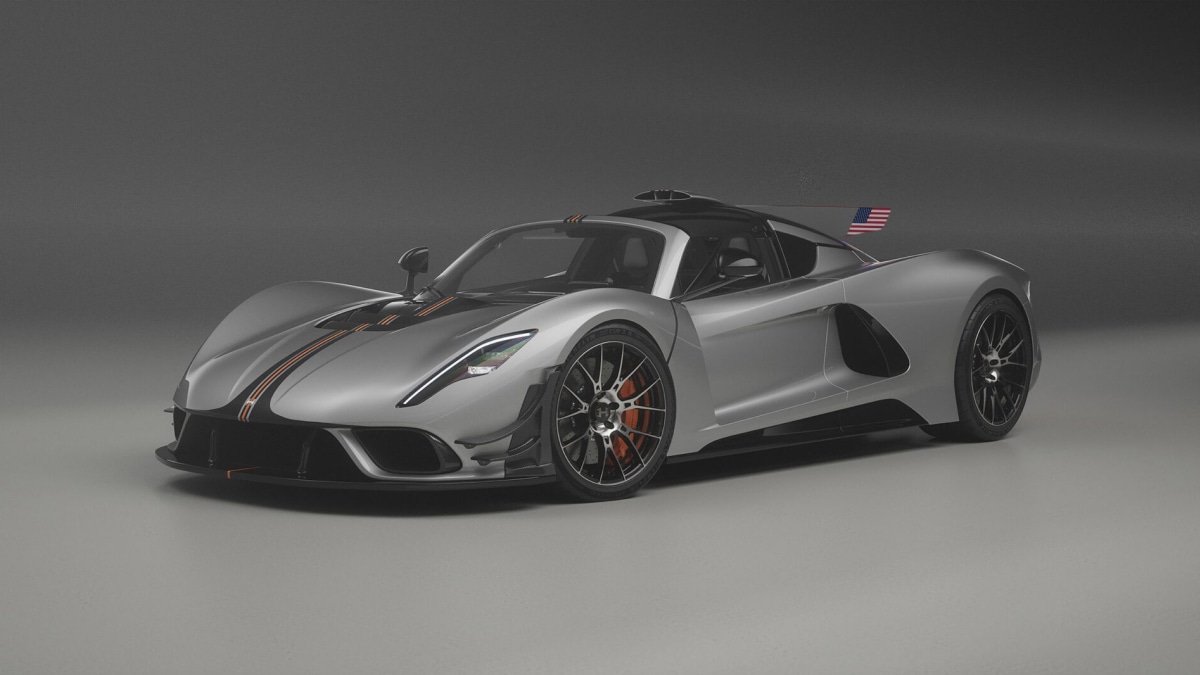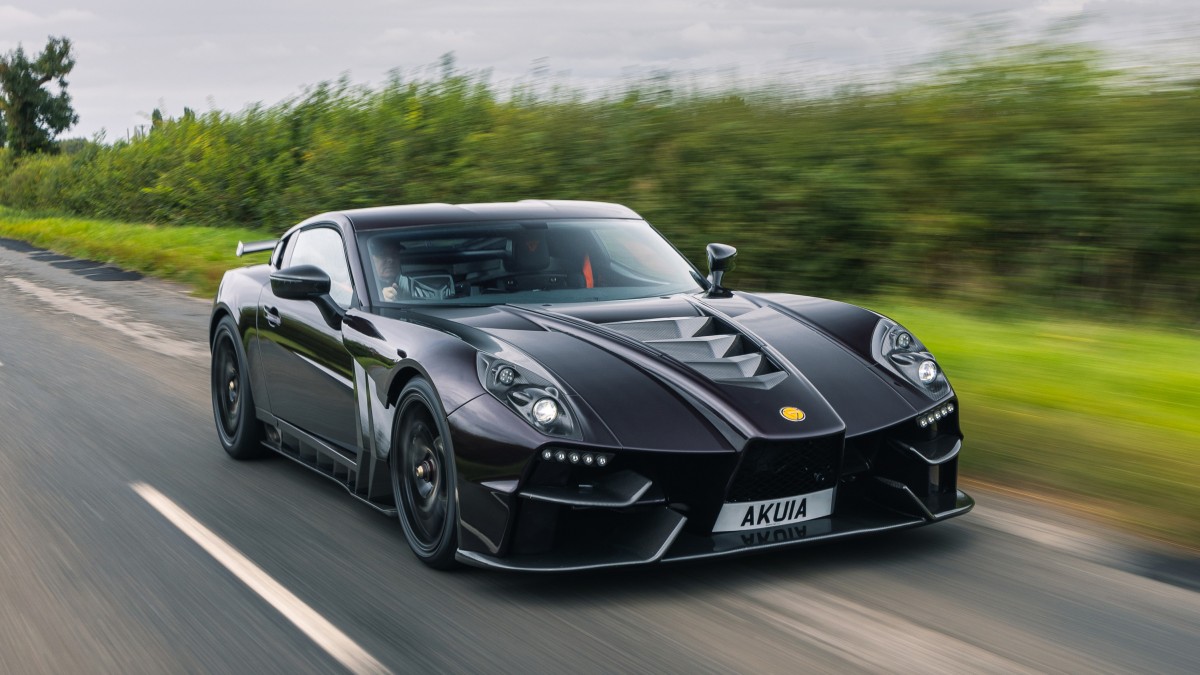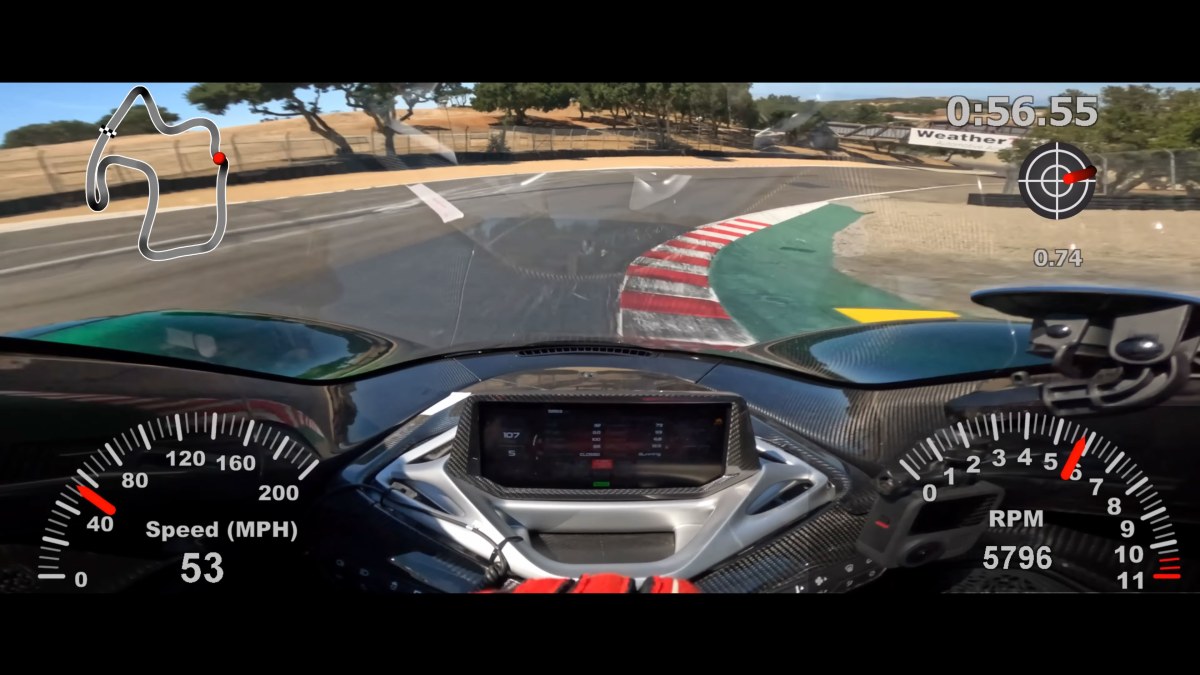The Rimac Nevera is an absolute beast. This 1,914-horsepower electric hypercar has been setting records left and right, from becoming the world’s fastest electric car, to tackling the Nürburgring in just over 7 minutes, and many more. So the folks at Rimac have had to get creative to find a new challenge, but find one they did. This time, the Rimac Nevera has set a Guinness World Record for the fastest speed in reverse.
This harrowing feat saw the Nevara back up at a top speed of 171.34 miles per hour. In the onboard footage below, you can see the view from the cockpit as the landscape recedes into the distance faster and faster. The vehicle data is interesting to watch, too, with the torque being distributed between the front and rear wheels, and the steering correction as the car drifts ever so slightly off the centerline. It’s all a bit disorienting.
So how did Rimac find itself aiming the rear end of the Nevera toward such a record? “It occurred to us during development that Nevera would probably be the world’s fastest car in reverse, but we kind of laughed it off,” said Nevara chief program engineer Matija Renić. “The aerodynamics, cooling and stability hadn’t been engineered for traveling backwards at speed, after all. But then, we started to talk about how fun it would be to give it a shot. Our simulations showed that we could achieve well over 150 mph, but we didn’t have much of an idea how stable it would be — we were entering unchartered territory.”
It’s hard to imagine driving in reverse at such speeds, and as Rimac test driver Goran Drndak can attest, it’s an odd experience. “On the run itself, it definitely took some getting used to,” Drndak said. “You’re facing straight out backwards watching the scenery flash away from you faster and faster, feeling your neck pulled forwards in almost the same sensation you would normally get under heavy braking. You’re moving the steering wheel so gently, careful not to upset the balance, watching for your course and your braking point out the rear-view mirror, all the while keeping an eye on the speed. Despite it being almost completely unnatural to the way the car was engineered, Nevera breezed through yet another record.”
The $2.2 million Rimac Nevera is powered by four individual motors, giving it a total of 1,914 horsepower and 1,740 pound-feet of torque. Driving forward, it’s capable of 0-60 in just 1.7 seconds, 0-100 in 3.21 seconds and 0-200 in just under 11 seconds. It set a top speed record of 256 mph. Its 120-kilowatt-hour battery is good for 350 miles of driving range on Europe’s WLTP testing cycle.




